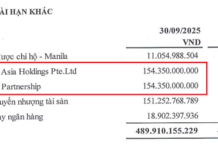Stringent Fuel Efficiency Requirements
The new Special Consumption Tax (SCT) law extends benefits not only to plug-in hybrid electric vehicles (PHEVs) but also to self-charging hybrid electric vehicles (HEVs). However, to qualify for the 70% tax incentive, hybrids must meet a critical condition: their fuel consumption (liters per 100 km) must not exceed 70% of the average consumption of comparable gasoline vehicles, based on cylinder capacity groupings.

To qualify for the 70% tax incentive, hybrids must meet a critical condition: their fuel consumption (liters per 100 km) must not exceed 70% of the average consumption of comparable gasoline vehicles, based on cylinder capacity groupings.
The Ministry of Finance has tasked the Ministry of Construction with categorizing and publicly announcing the average fuel consumption rates for various gasoline vehicle types on the National Information Portal. The first announcement is expected by December 31, 2025, providing a basis for determining eligible vehicles. This list will be updated annually by March 31.
Methodology for Calculating Average Consumption
The average fuel consumption will be determined using data from vehicles of the same cylinder capacity currently on the market.
“For example, to calculate the average fuel consumption for vehicles with engine capacities up to 1.5L, the fuel consumption of all gasoline vehicles in this category will be averaged. The hybrid vehicle’s consumption will then be compared to this average. If it does not exceed 70% of the average, it qualifies for the SCT incentive,” explained a member of the technical subcommittee of the Vietnam Automobile Manufacturers Association (VAMA).
A representative from the National Traffic Vehicle Emission Testing Center (NETC) stated that the official comparison criteria will be based on fuel consumption data from the Vietnam Register’s certification. Passenger cars will be compared with gasoline vehicles of the same type (same manufacturing/assembly location, vehicle type, and cylinder capacity) with data from the last three years. “For instance, the Honda CR-V 1.5L and its hybrid counterpart will be compared. If the hybrid’s consumption does not exceed 70% of the conventional model’s, it qualifies for the tax incentive. For new models not previously available in Vietnam, the comparison will be made with the average of the group based on cylinder capacity.” However, the NETC representative noted that vehicles with more than 9 seats currently lack comparable fuel consumption data due to insufficient information.
Lower Vehicle Prices, Greater Economic Benefits
The reduction in SCT not only directly lowers this tax but also reduces VAT, significantly decreasing the final on-the-road price of hybrid vehicles.

The 2024 Toyota Camry in Vietnam offers three variants, including two hybrid models: the HEV Mid priced at 1.46 billion VND and the HEV Top at 1.53 billion VND.
A representative from an automotive brand analyzed: “If a 1,500cc imported HEV valued at 500 million VND post-import tax receives a 70% SCT incentive, the tax reduction would be approximately 52.5 million VND. Including VAT, the vehicle’s price could drop by nearly 60 million VND compared to the non-incentivized price.” This representative also confirmed, “Hybrid vehicle prices will definitely decrease, but the extent of the reduction depends on numerous factors. Some models will see significant price drops, while others will see less.”
Associate Professor Dr. Đàm Hoàng Phúc of Hanoi University of Science and Technology believes this tax reduction will be a game-changer. “With the SCT incentive, if the price of hybrid vehicles is no longer significantly higher than that of conventional internal combustion engine vehicles of the same type, consumers are more likely to choose hybrids. Manufacturers like Toyota and Honda are likely producing hybrids in Vietnam to meet this growing demand.”
Although hybrid vehicles currently cost about 100 million VND more than their gasoline counterparts, their long-term economic benefits are substantial. With extended warranties for batteries and electric motors (approximately 7 years or 150,000 km) and minimal additional maintenance costs, primarily for cooling system cleaning, owners can drive with confidence. Additionally, hybrids allow owners to travel in low-emission zones (LEZs) as they meet emission standards of Euro 4 and higher.
“Honda HR-V e:HEV vs. Toyota Yaris Cross HEV: Which Hybrid is the Smart Fuel-Efficient Choice for Women?”
The Honda HR-V e:HEV and Toyota Yaris Cross HEV are two impressive compact hybrid SUVs that have captured the attention of many. With their youthful designs, fuel efficiency, and competitive pricing, these vehicles offer a fresh and appealing option for those seeking a stylish and economical ride.










































